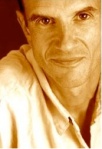 For the last 8 years Chameli and I have been practicing and teaching an approach to intimate relationship which we call the Deeper Love. It has arisen one hundred percent out of our own personal experience, and our longing to bridge a schism which can often be confusing and painful. We have taught this as a seminar both in the US and in Europe.
For the last 8 years Chameli and I have been practicing and teaching an approach to intimate relationship which we call the Deeper Love. It has arisen one hundred percent out of our own personal experience, and our longing to bridge a schism which can often be confusing and painful. We have taught this as a seminar both in the US and in Europe.
I started to guide people into awakening in 1991 at the invitation of my teacher H.W.L. Poonja. He asked me to “share the secret with my friends.” My wife at the time and I returned back to Seattle, where we had previously been living, and I started giving “Satsang.” People would come to our small apartment, just 8 or 10 at first, to find out what I had been up to in India. It didn’t take long for that same realization of spaciousness to become infectious. Soon the meetings grew from 10 to 30, then from 30 to one hundred. It was during those first months that our first son, Abhi, was born. A couple years later we had Shuba, our second child.
So there I was, after a few years, giving teachings to people all over the world that were profoundly impacting their lives and helping them experience the “Big Love,” — and I also had a personal life: I was married with children. It was sometimes confusing and disorienting to discover that the “Big Love” we shared in Satsang and on retreats was not sustained at home. I was still experiencing the same kinds of conflict, misunderstanding, and shutting down as I had known all my life, not only in my own relationships, but I had also seen in my family growing up. Eventually that marriage fell apart amidst feelings of failure, deep disappointment, and some sense of hypocrisy that I had been unable to live, in my personal life, what I had been teaching on a bigger scale.

 Here is a passage from my 2005 Bestseller, “The Translucent Revolution.”
Here is a passage from my 2005 Bestseller, “The Translucent Revolution.”

 Welcome dear friends, old and new. You will find here my most recent ramblings, as well as occasional excerpts from my previously published work, and references to other things you may enjoy. Please post comments, I read everything and generally respond.
Welcome dear friends, old and new. You will find here my most recent ramblings, as well as occasional excerpts from my previously published work, and references to other things you may enjoy. Please post comments, I read everything and generally respond.
